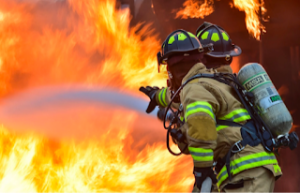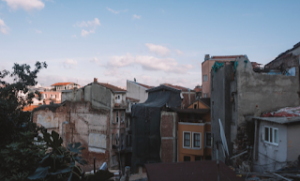Although the Internet-of-Things, IoT, can’t prevent disasters from happening, IoT can help identify and respond to them enough to save lives and resources. IoT use can help authorities save money and time by providing valuable information about affected people, property, and geographical areas.
While natural disasters are inevitable, the alarming rise of these disasters is worrisome. According to a report released by the United Nations in 2020, extreme weather events have become more frequent and are linked to a significant increase in the number of disasters.
Between 2000 and 2019, over 700 major disasters caused over a million deaths and affected 4.2 billion people. These figures are alarming as they show a significant increase over the past twenty years. In the two decades preceding the 21st century, the number of disasters only increased by about 400, which resulted in approximately $1.6 billion in economic losses.
The most common types of disasters reported in recent years are floods and storms. However, there has also been a significant increase in other natural hazards such as earthquakes and wildfires. These include landslides, droughts, and a rise in disasters such as tsunamis and earthquakes. As a result, emergency officials must adopt a more efficient and effective approach to preparing for disasters.
Despite the lack of effective disaster prevention measures, IoT technology can help improve the response and preparedness of emergency officials. It can also help identify and respond to emergencies early to save lives and resources.

The Global Disaster Management Center states that emergency management can be divided into four phases: mitigation, preparedness, response, and recovery.
Mitigation: Minimizing disasters’ effects by implementing measures such as building codes, flood plans, emergency checklists, and zoning regulations.
Preparedness: Planning and preparing through emergency training exercises and warning systems.
Response: Implement a plan of action to minimize threats and hazards.
Recovery: IoT Technology can also help communities recover from disasters by providing situational information and other specific support services based on your location.
Various devices, such as drones and sensors, can monitor disasters. These tools can help improve the response and preparedness of emergency officials. They can also help people make informed decisions and save lives. In addition, IoT can help in rescue operations by providing enhanced rescue communications.
Mitigation
Using sensors and devices help in warning of impending disasters such as tornadoes and volcanic eruptions. In addition, it can help protect critical infrastructure by monitoring various pollutants and contaminants.
Preparation
IoT can help improve the response and preparedness of emergency officials. It can help them identify and respond to emergencies to save lives and resources. Through the use of connected devices, it can be possible to monitor and analyze real-time situations.
The information collected by IoT can be used by professionals to improve efficiency and prioritize what needs repairing. In addition, IoT can help monitor injuries and levels of various vital supplies such as food, water, and medical equipment.
Response

One of the most critical factors emergency officials need to consider is situational awareness. This can help identify danger zones and contaminated areas and prioritize resources required to help those in need. However, as operations continue, recovery efforts must also be continuously adjusted and adapted to changes in conditions. For instance, if a business, area, or community has deployed IoT as part of its infrastructure, it can be used to monitor and communicate emergency conditions to the masses.
In addition to monitoring the situation on the scene, the IoT can also help first responders plan and adjust their actions in response to an incident. For example, by equipping firefighters with smart clothing, they can monitor their vital signs and other conditions on the job. This can help them avoid injury or facilitate their removal from a dangerous condition.
IoT can also help keep the public informed about the latest developments in the area by sending out notifications to people and systems. Take a tornado, for example, which has hit a populated facility; a mobile alert message can keep the public informed as to areas impacted and additional important information.
Digital signs, such as those found at bus stops and on city squares, can also distribute important information quickly. With the help of batteries, connected devices can provide portable communication services.
Recovery
Disaster recovery is a complex operation, and it can be very challenging to get the necessary resources and information out to help affected communities. An important function of IoT-based systems is a unified response, i.e. helping military and emergency response personnel work in unison to improve the efficiency of the operations.
The Future of Disaster Response Management: A Look at MERLENN®

Natural disasters, terrorist attacks, and other threats affect people in different geographical regions. With the development of MERLENN®, the team at Counterspherics has created a system that helps businesses and organizations prepare for and respond to crises.
While research is being conducted on how the IoT can be leveraged to predict natural disasters, more work is needed on how communication can be streamlined to help businesses keep their employees safe. Unlike other solutions, MERLENN® provides people with immediate updates about a situation to make informed decisions.
The lack of timely information and adequate measures to react can lead to disastrous consequences of an already bad situation. Humans can adapt to conditions and must respond in a certain manner to hopefully ensure they handle any challenges that come their way. With the help of MERLENN®, people can now respond to hazards and threats in a well-defined manner.
Ensuring HumanSafety using MERLENN®
IoT can help search and rescue teams in near/real-time by providing them with critical situational information. It can also help keep the public informed about the growing dangers expanding in an area by sending out notifications and other digital content.
To learn more about how MERLENN® can be locally, nationally, or worldwide before, during, and after disasters, readers are encouraged to check out their video-animated case study about the 2011 Japan triple disaster. The study showcases how a California university used its system to provide real-time alerts and instructions to their students and families in Japan on where to go, what to do, and how to get out of the country. Counterspherics is constantly working on safety and threat management systems to help people and businesses in crisis events.
You can reach out to them today for more information.
About The Editors and Counterspherics®
Rushton Prince and Henrie Watkins are Safety and Disaster Preparedness experts. Both have extensive backgrounds as First Responders, Safety Technology Implementers, Human Protection, and Occupational Health and SaftyTrainers.
Counterspherics, the company behind MERLENN® has 22 years of experience in providing crisis response infrastructure and boasts a 100% customer satisfaction rate. To view illustrated examples of the software in action, follow Counterspherics on YouTube.
Disclaimer: Please note that this content has been proofread manually and through grammar checkers to eliminate all spacing errors. Any spacing errors you may come across are due to compatibility issues in Microsoft Word.

